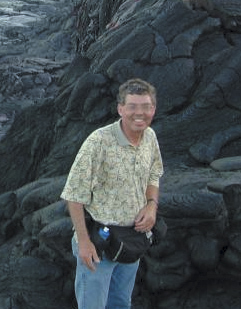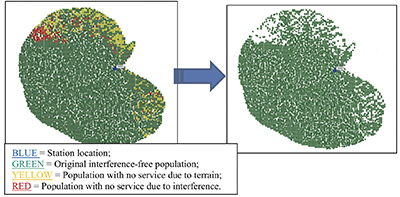FCC Outlines Repacking Techniques

Doug Lung
WASHINGTONIn early August the FCC posted the latest version of its TVStudy software. If you saw my column “Installing the FCC’s ‘TV Study’ in 24 Easy Steps” (RF Technology, April 1) and thought it too complicated, the v.1.26 TVStudy program files on the FCC TVStudy Software website should not require compiling to run on most 64-bit Linux installations, (http://data.fcc.gov/download/incentive-auctions/OET-69/).
It is still necessary to install MySQL (or MariaDB, a drop in replacement for MySQL) and Java. You’ll also need the 2013Jan_tvstudy_data_files (See steps 1 and 2 and 8–12 in my April article). Click on “TVStudy software (64-bit Linux)” on the FCC TVStudy Software website to get the latest program files. Then follow the steps in the TVStudy Instruction Manual and TVStudy Upgrade Guide & Change Log.
NEW TVSTUDY OPTIONS
TVStudy now includes options to allow individual elevation or matrix patterns for contour projection; to set terrain-sensitive service thresholds independently of the noise-limited contour; and to apply pattern data mirroring to generic elevation patterns.
The software has an antenna pattern editor and allows importing and exporting pattern data in the .csv file format (see the Upgrade Guide for the complete list of changes and enhancements).

Fig. 1: This graph shows how the baseline interference-free population is calculated. The map on the right the cells with no population served due to terrain or cells with no population served due to interference have been removed. Refer to the excellent TVStudy Instruction Manual for instructions on how to run studies and the many options available. The shapefiles I used in my June 22 RF Technology column (“Using TVStudy to Map Coverage, Interference”), are generated if you select “Yes” on the “Map” output file options (p. 53 in the TVStudy manual).
A study run with all of the relevant stations in an area selected as both desired and undesired, the tvstudy.csv file generated by the program will show the coverage and interference for each station as well as the sources of interference. This file will be useful in evaluating how different TVStudy options impact coverage and interference.
The professional video industry's #1 source for news, trends and product and tech information. Sign up below.
PROPOSED REPACKING TECHNIQUES
Along with the new TVStudy software, the FCC described a way to “pre-calculate” which stations could be assigned to which channels in the repacking process, and which stations cannot operate on the same or adjacent channels. This allows the FCC to quickly test the feasibility of a repacking plan during the auction while verifying the plan would meet the Spectrum Act’s requirement that the FCC “make all reasonable efforts to preserve, as of Feb. 22, 2012, the coverage area and population served of each broadcast television licensee…” and comply with agreements with Canada and Mexico.
The precalculation process is described in detail in “Technical Appendix: Constraint Files Generation (http://transition.fcc.gov/). Three maps (Figs. 1 and 2), taken from Technical Appendix illustrate the process.
Fig. 1 shows how the baseline interference- free population for Station 10001 is calculated. In the map on the right, the cells with no population served due to terrain or cells with no population served due to interference have been removed.
Fig. 2 shows the result of placing Station 10002 (the blue dot on the left side of the map) on the same channel. Note that interference only occurs in cells which had coverage (map on the right in Fig. 1). After the new interference is calculated, if the amount of interference caused by an assign is more than 0.5 percent (in this example it clearly is), then Station 10001 cannot exist on the same channel as Station 10002.

Fig. 2: This graph shows the result of placing Station 10002 (the blue dot on the left side of the map) on the same channel. You can generate your own maps using TVStudy and Quantum GIS (QGIS) using tips in the TVStudy manual and the QGIS mapping template from the TVStudy Software website.
Because it would take too long to calculate coverage individually for each station on each possible channel, the FCC proposes using “proxy” channels to determine interference and coverage. The FCC staff used Ch. 3 for low VHF, Ch. 10 for high VHF, and Ch. 20 for UHF.
Now you see why the new TVStudy software includes the option to set terrain-sensitive service thresholds independently of the noise-limited contour.
Due to the dipole factor the FCC uses in calculating coverage, the service threshold varies from 42.1 dBμV/m at Ch. 51 to 38.7 dBμV/m at Ch. 14. If the noise-limited contour wasn’t adjusted, a station moving from Ch. 14 to Ch. 20 would see its contour reduced and a station moving from Ch. 51 to Ch. 20 would see its contour expanded. While it’s relatively easy to match a station’s contour on the proxy channel, the FCC does not propose taking into account the differences in the impact of terrain due to frequency, although they will likely be considered in the final analysis after the auctions are complete.
While I need more time to dig deeper in this plan and run some studies, I’m encouraged by what I’ve seen so far. The staff used a threshold of 0.5-percent new, unique, lost population per interferer, the same interference threshold used when evaluating applications for new or modified TV stations. If this threshold is applied throughout the entire repacking process, there is likely to be a second, more detailed analysis of the repacking scheme when the auctions are closed. It should comply with the Spectrum Act’s coverage preservation requirement as calculated using the FCC’s OET-69 methodology if the input is correct and the right study options are used.
If you don’t want to take the time to download and install TVStudy, sample TVStudy output files are available on the FCC TVStudy Software website. It is even easier to download constraint files from a staff analysis, based on preliminary assumptions, from http://data.fcc.gov/download/incentive-auctions/Constraint_ Files/.
Note that stations are listed by facility ID, not call sign. The tv20130628.xls TV Engineering Database spreadsheet at http://xmtr.com/fcc lists facility IDs. The Domain_2013July15.csv file shows what channels are available to individual stations based on international agreements and land-mobile allocations. The Interference_ Paired_2013July15.csv file shows what stations cannot be placed co-channel, upper-adjacent or lower-adjacent to your station in a given band.
Verify that the data the FCC is using for your station is correct. If your station uses mechanical beam tilt, it may be worth entering the actual azimuth and elevation patterns in TVStudy and running a study using that pattern for contour calculation rather than the often bogus normalized horizontal plane azimuth pattern.
I’m going to do some tests to see what impact this has on predicted coverage and interference. More on that in a future column!
Let me know your experiences with the new TVStudy software. Drop me an email at dlung@transmitter.com.

Doug Lung is one of America's foremost authorities on broadcast RF technology. As vice president of Broadcast Technology for NBCUniversal Local, H. Douglas Lung leads NBC and Telemundo-owned stations’ RF and transmission affairs, including microwave, radars, satellite uplinks, and FCC technical filings. Beginning his career in 1976 at KSCI in Los Angeles, Lung has nearly 50 years of experience in broadcast television engineering. Beginning in 1985, he led the engineering department for what was to become the Telemundo network and station group, assisting in the design, construction and installation of the company’s broadcast and cable facilities. Other projects include work on the launch of Hawaii’s first UHF TV station, the rollout and testing of the ATSC mobile-handheld standard, and software development related to the incentive auction TV spectrum repack. A longtime columnist for TV Technology, Doug is also a regular contributor to IEEE Broadcast Technology. He is the recipient of the 2023 NAB Television Engineering Award. He also received a Tech Leadership Award from TV Tech publisher Future plc in 2021 and is a member of the IEEE Broadcast Technology Society and the Society of Broadcast Engineers.
